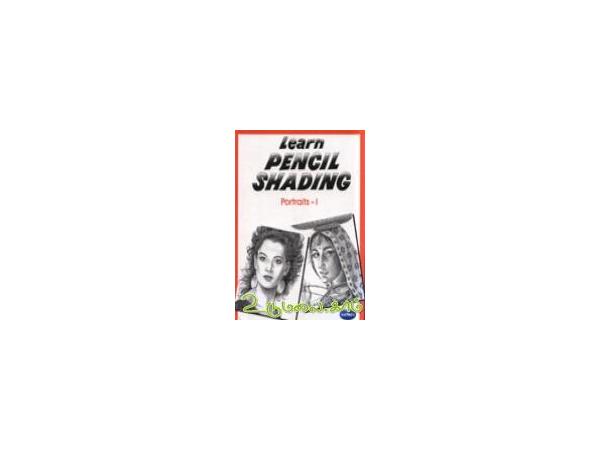Drawing Pencil Set Value and Shading Worksheet $ 1.50 Drawing Pencil Set Value & Shading Worksheet (2 Page PDF) Students Will Learn: Value & Value Scale Definitions, Explanation of Drawing Pencil Numbers (B & H), Drawing Pencil Value Scale Example, Practice Shading with 16 Different Drawing Pencils 9B-9H, Practice Shading Forms with Drawing.


Shading Pencils Set
Point and Flat Shading
The first step to successful pencil shading is to control the movement of your pencil, making sure that every mark you make on the paper works towards creating the shading or modeling effect that you want. The following pages offer a few tips to get you started. To begin with, decide whether you want to use the point or side of the pencil to shade with.
The example at left is shaded with the point, at right, with the side. The difference doesn't show up clearly in the scan, but you can see that the side shading has a grainier, softer look and covers a large area quickly (a chisel-point pencil will also give this effect). Using a sharp point to shade allows you more control, you can do much finer work, and get a greater range of tone out of the pencil.
Experiment with both to see how they look on your paper. Try shading with hard and soft pencils, too.
This article is copyright of Helen South. If you see this content elsewhere, they are in breach of copyright law. This material is NOT open source or public domain.
Pencil Shading Problems
When pencil shading, the first thing most people do is to move the pencil back and forth in a regular pattern, with the 'turn' at the end of each movement roughly parallel, as in the first example. The trouble is, when you use this technique to shade a large area, that even edge gives you a dark line through your area of tone. Sometimes it is only subtle, but often it looks very obvious and spoils the illusion that you are trying to create with your pencil shading. Let's look at some ways to fix this.
Irregular Shading
To prevent unwanted banding through a shaded area, change the pencil direction at irregular intervals, making one stroke long, then next short, overlapping where needed. The example at left shows an exaggerated example of how this effect is begun; at right the finished result.
Circular Shading
An alternative to regular 'sideways' pencil shading is to use small, overlapping circles. This is similar to 'scumbling' or the 'brillo pad' technique, except that the object here is to minimize texture, rather than create one. To do this, you need to use a light touch with the pencil and work an area in an irregular, overlapping pattern to gradually build up the graphite on the page. A particularly light touch is required for lighter areas to avoid a 'steel wool' texture developing.
Directional Shading
Direction - don't underestimate it! Here's a really rough change of direction: with two coarsely shaded areas side by side - there's no missing the difference! Drawn like this, it is screamingly obvious: one has a big horizontal movement, the other vertical, and the edge between the two is very clear.
Now, if you are shading an object, even if your shading is more even and the pencil marks less obvious, this effect is still there - just more subtly. You can use it, to create a suggestion of an edge or a change of plane. But it will also suggest a change of plane even if you don't intend it to. You don't want to randomly change direction in the middle of an area. The eye will read it as 'meaning' something. Control the direction of your shading.
Try shading an object in various ways: using no visible direction (circular shading), one continuous direction, few big changes, and many subtle changes.
Using Lineweight in Shading
When using directional shading, you can vary the pressure on the pencil to create light and dark tones. Controlling it very precisely can allow you to model smooth forms. A more relaxed approach to lifting and re-weighting the pencil for a fairly continuous line is useful for creating highlights across textures like hair or grass.
Contour Shading
Contour pencil shading uses directional shading which follows the contours of a form. In this example, contour shading is used in combination with line weight, adjusting the pressure to create light and shade. This allows you to create strong dimensional effects in your pencil drawing. You can control these factors precisely or use a relaxed and expressive approach. Be sure to take perspective into account, so that the direction of shading changes correctly along a form drawn in perspective.
Shading in Perspective
If you are doing a quick sketch or roughly shading an area, the direction of the pencil marks can be very obvious, and even a quite dense shading can still reveal directional marks. A common mistake that beginners make is to begin shading along one edge of an object in perspective and to continue that direction all the way down so that by the time they reach the bottom, the direction of shading is working against the perspective, as in the panel at top left. Beside it is a panel shaded horizontally: again the shading fights against the perspective and flattens the drawing.
In the second example, the direction of shading follows the perspective correctly, with the angle changing gradually so that it is always along an orthogonal (vanishing line). With a practiced eye, you can do this by instinct, or, as you see in the example, you can draw subtle guidelines back to the vanishing point first. The right panel of this box is shaded vertically. This doesn't accentuate the foreshortening as perspective shading does, but it also doesn't fight against it. Another good option is to use circular shading and avoid creating any directional movement at all.